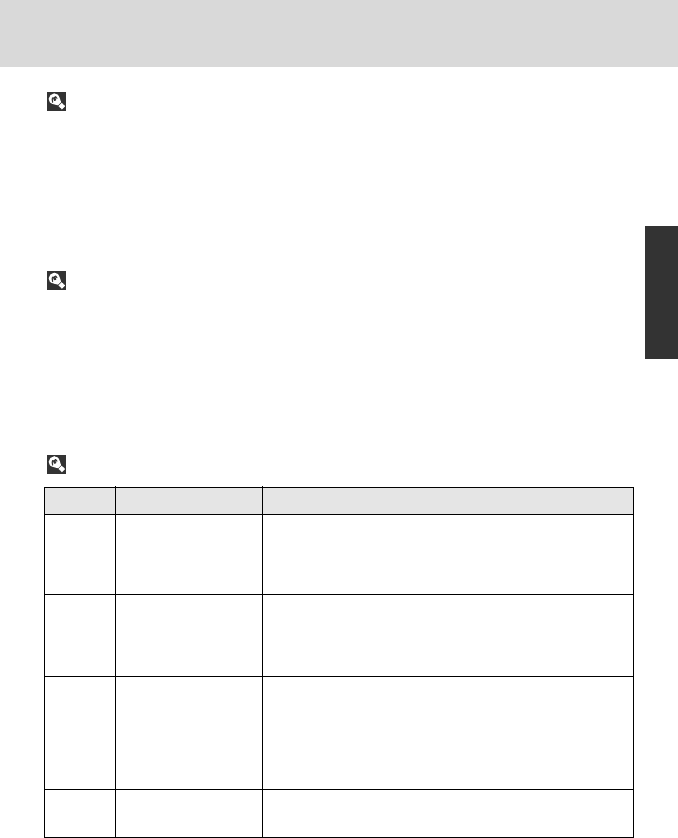
27
Basic Operation
Symbol Exposure mode
¡
Programmed
Auto P. 64
™
Shutter-Priority
Auto P. 66
£
Aperture-Priority
Auto P. 68
¢ Manual P. 70
Shooting situations
Camera controls shutter speed and aperture
automatically, while allowing you to make other
settings, such as Flexible Program (x 64) or
exposure compensation (x 74).
You set your desired shutter speed, and the camera
selects the correct aperture. Allows you to “freeze”
the motion of a moving subject using a fast shutter
speed or blur the subject using a slower speed.
You set the desired aperture, and the camera
selects the correct shutter speed. This lets you
determine the depth of the in-focus area (x 164),
so you can choose whether near or distant subjects
are in sharp focus, or whether foreground or
background should be blurred.
Shutter speed and aperture are set manually. Long
Time Exposure (Bulb) can also be selected.
Characteristics of exposure modes
Metering Systems
Since brightness and film sensitivity determine the proper combination of shutter
speed and aperture for correct exposure, measuring subject brightness is very
important.
The F6 provides three metering systems. With Matrix Metering (x 62), brightness
data is detected using the 1,005-pixel Matrix sensor. With Center-Weighted Metering
(x 63), brightness is detected in the central area of the viewfinder. With Spot
Metering (x 63), sensitivity is concentrated in one of the 11 available focus areas.
Exposure
Light from the subject passes through the lens and exposes the film. Shutter speed
and aperture control how much light reaches the film. The correct combination of
shutter speed and aperture results in a correct exposure—a result provided by the
F6’s four exposure modes: Programmed Auto, Shutter-Priority Auto, Aperture-Priority
Auto and Manual.
P930_En 04.10.19 7:18 PM Page 27


















